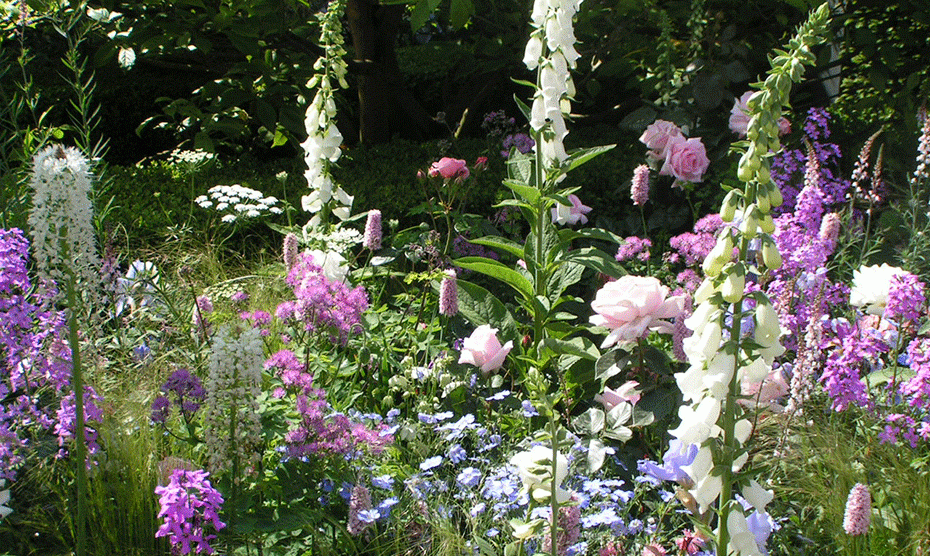Keep your borders looking spectacular
A border overflowing with glorious blooms in summer is the epitome of the English country garden. Although not easy to achieve, when it is at its peak there is nothing to compare. These borders are the pride of many a stately home and if planned well can provide colour and interest from spring well into autumn. Plants in an herbaceous border can vary from the tough winter hardy perennials to the tender tropicals which have to be over-wintered in a frost-free greenhouse.
Herbaceous perennials, which are usually what makes up the bulk of a mixed border, are cut down to the ground every winter or early spring. These plants live for many years and can be easily split and propagated to fill any gaps or swap with other gardeners for different species. If you choose varieties which suit your garden conditions, they can be low maintenance and relied upon to put on a good show.

If you prepare well in late spring it cuts down on the work in summer, leaving you with more time to sit back and enjoy your garden. In spring make sure that all the dead leaves are removed, old stems cut back, soil fed, watered, weeded and then mulched and tall plants supported. If you haven’t staked the tall plants it can be done in summer; the easiest method when the plants have grown is by inserting canes all around the clump then winding string around the canes.

- Cutting some perennials back around the time of Chelsea Flower Show, third week of May, can give you stockier plants and a later show of flowers. It is carried out on tall leggy perennials which haven’t flowered by this time. Just cut them back to almost ground level.
- Mulch if you didn’t do it in spring; it can still be done if you have large patches of bare ground. Just weed, feed, water then mulch. (Click here to read how to mulch in spring.)
- If your perennials have flowered by early to mid-summer cut them back and they will give you another flush of flowers in late summer and early autumn.

- If you have planted new plants in spring make sure they are kept well-watered throughout the season. Once they have become established, they should have put roots down to where there is some moisture.
- If you have a light sandy soil you may have to water in dry spells. Established plants on heavier clay and humus-rich moisture-retentive soils should be able to survive without watering.
- If you haven’t mulched you will have to keep weeding all summer. The best time is to just hoe the weeds after a dry spell. If the weeds have got out of hand pick them up and add to the compost heap. If done regularly and weeds are just small, they can be left on the surface of the soil where the sun will dry them out. Once you have a packed border there will be less weeds as they will be deprived of light and unable to germinate.
- Keep dead-heading to ensure your plants carry on flowering. Some plants, such as bearded iris will only produce one flush of flowers.
- Finally, the insects and fungal infections become rampant in summer, especially if you have a packed border and the weather is wet and warm. The easiest way to deal with insect infestations is to feed the birds and provide food plants for hoverflies. Both of these will also hoover up the insects as well as the food you provide.
- If you have plants which are prone to mildew you can spray before the fungus takes hold. If you leave it too late then you can only either live with it or cut it all out if it is particularly bad.
- If you have hedgehogs in the garden they will deal with the slugs and snails, if not you will have to pick them off or deter them in some way as a nice lush herbaceous border is the slug equivalent of a 5* Michelin restaurant.


